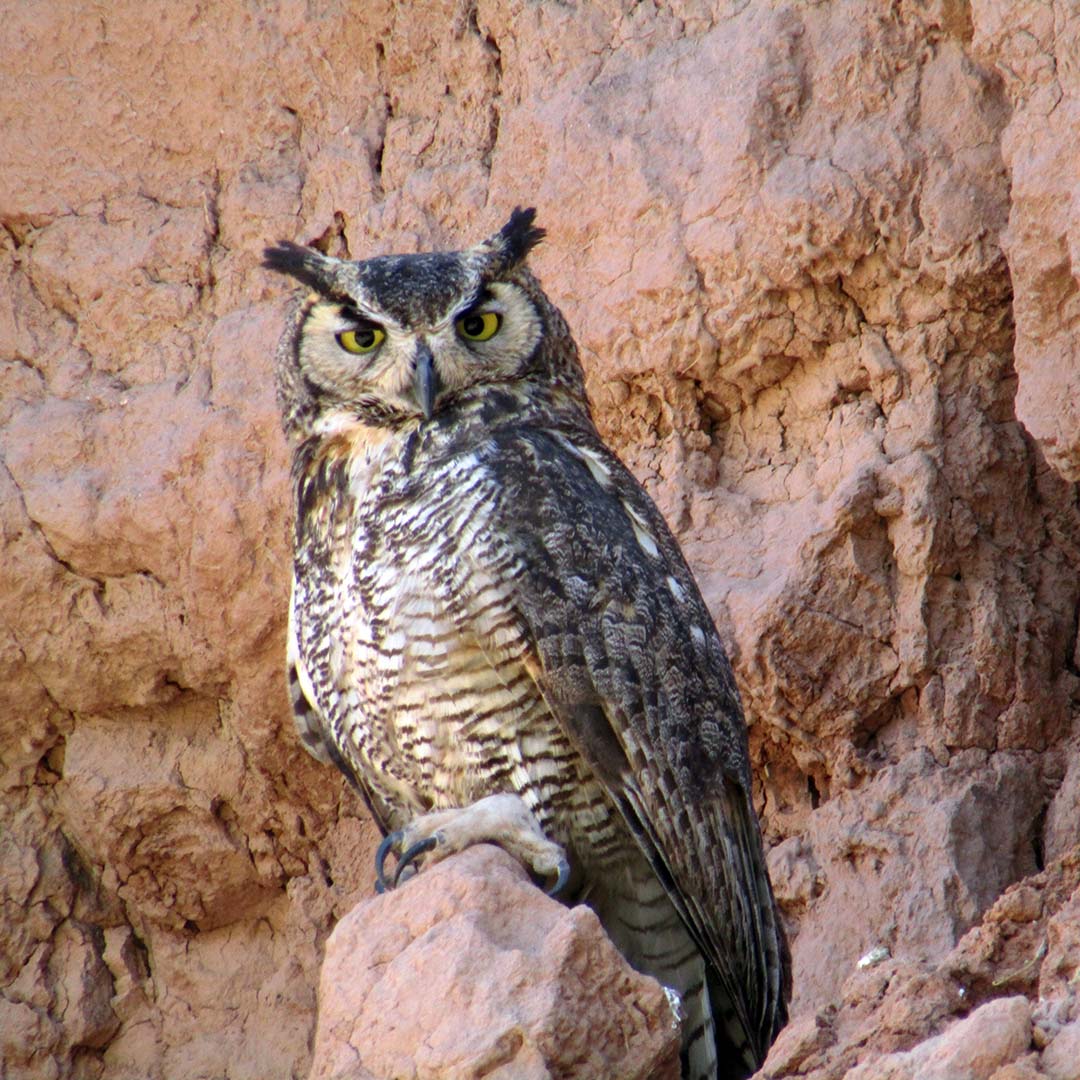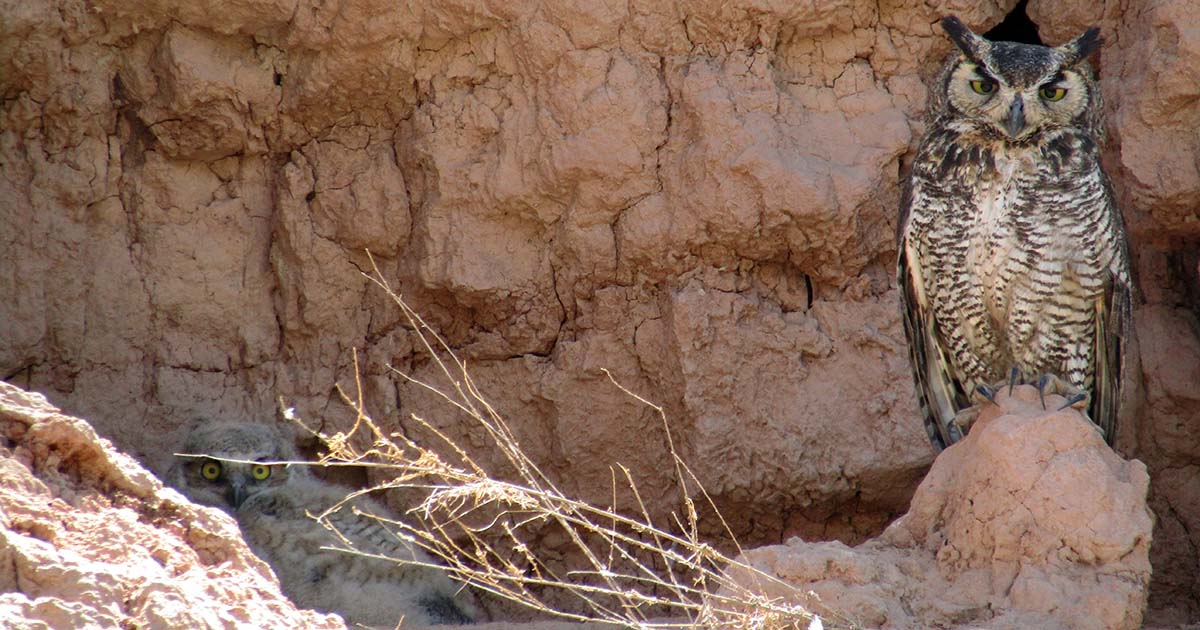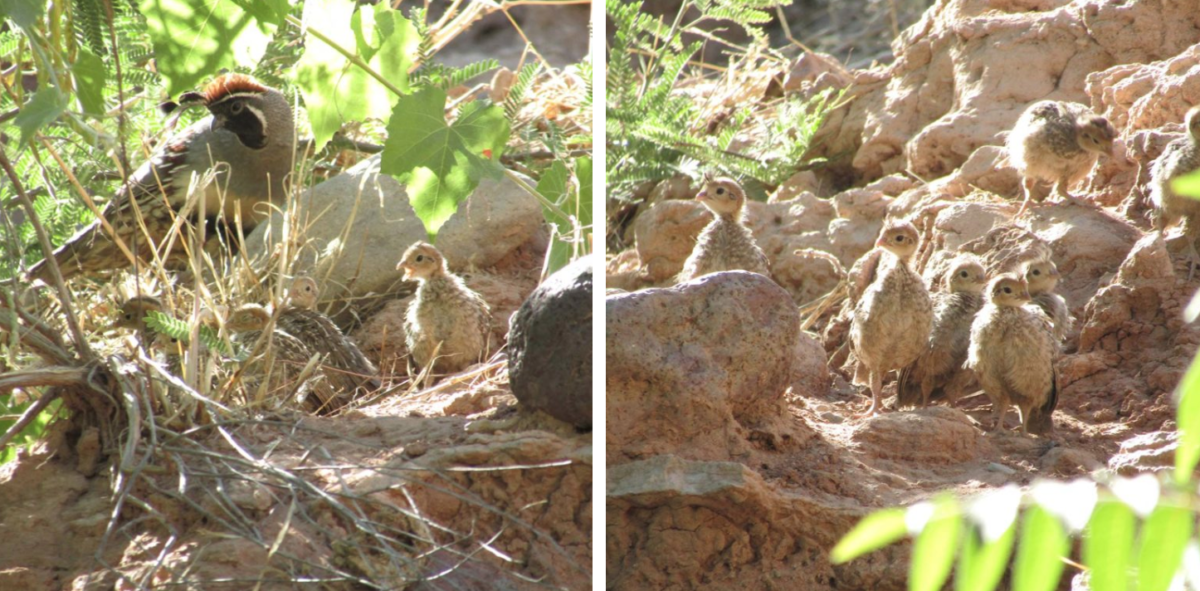 Whenever I go check remote cameras near Agua Prieta, Sonora, I get excited about what I might see during the trip. Normally, to get to the places where the cameras are, I have to take a short 20-minute walk. During this time, I go stealthily because of what can be observed. Sometimes I stop for a moment to look for birds, since the place is frequently visited by species who come to drink water or rest near the place’s natural springs.
Whenever I go check remote cameras near Agua Prieta, Sonora, I get excited about what I might see during the trip. Normally, to get to the places where the cameras are, I have to take a short 20-minute walk. During this time, I go stealthily because of what can be observed. Sometimes I stop for a moment to look for birds, since the place is frequently visited by species who come to drink water or rest near the place’s natural springs.
Over time the wildlife I’ve come to see are coyotes, wild cats, skunks, mule deer, and a great variety of birds. One of the species that always amazes me when I find it is the great horned owl (Bubo virginianus). On most occasions that I’ve gone to check the cameras, I see owls in the distance, and they look at me with their big eyes.
The last few times I went to check the cameras, I saw the owls even closer to where I was walking — about 10 meters away. I was very surprised that they didn’t fly away, and I started taking pictures of them and I said, “My friends, the owls!” because they no longer left when they saw me. They were no longer afraid of my presence. Returning from checking the cameras, I again saw an owl very close by and noticed that it was watching me. It was very alert. Watching him for a moment, I noticed something moving behind him, and it was a baby great horned owl. I was very surprised and delighted, since for several years I had seen the owls in this area, but never with their young.

Another species that’s beautiful to observe this time of year are Gambel’s quails (Callipepla gambelii) with all their young. When they come to drink water, my family and I start counting them. We have seen as many as 30 offspring at one time. It’s fun to see them when they arrive — walking all in a row. The babies are so small.

It’s important to know that when observing birds, their well-being must be taken into account so as not to negatively affect their activities. Whenever we see that our presence could cause problems for a bird, we should withdraw. The best way to know if we are bothering them is to just notice their behavior. You can tell when they become stressed or alter their behavior because of our presence.

